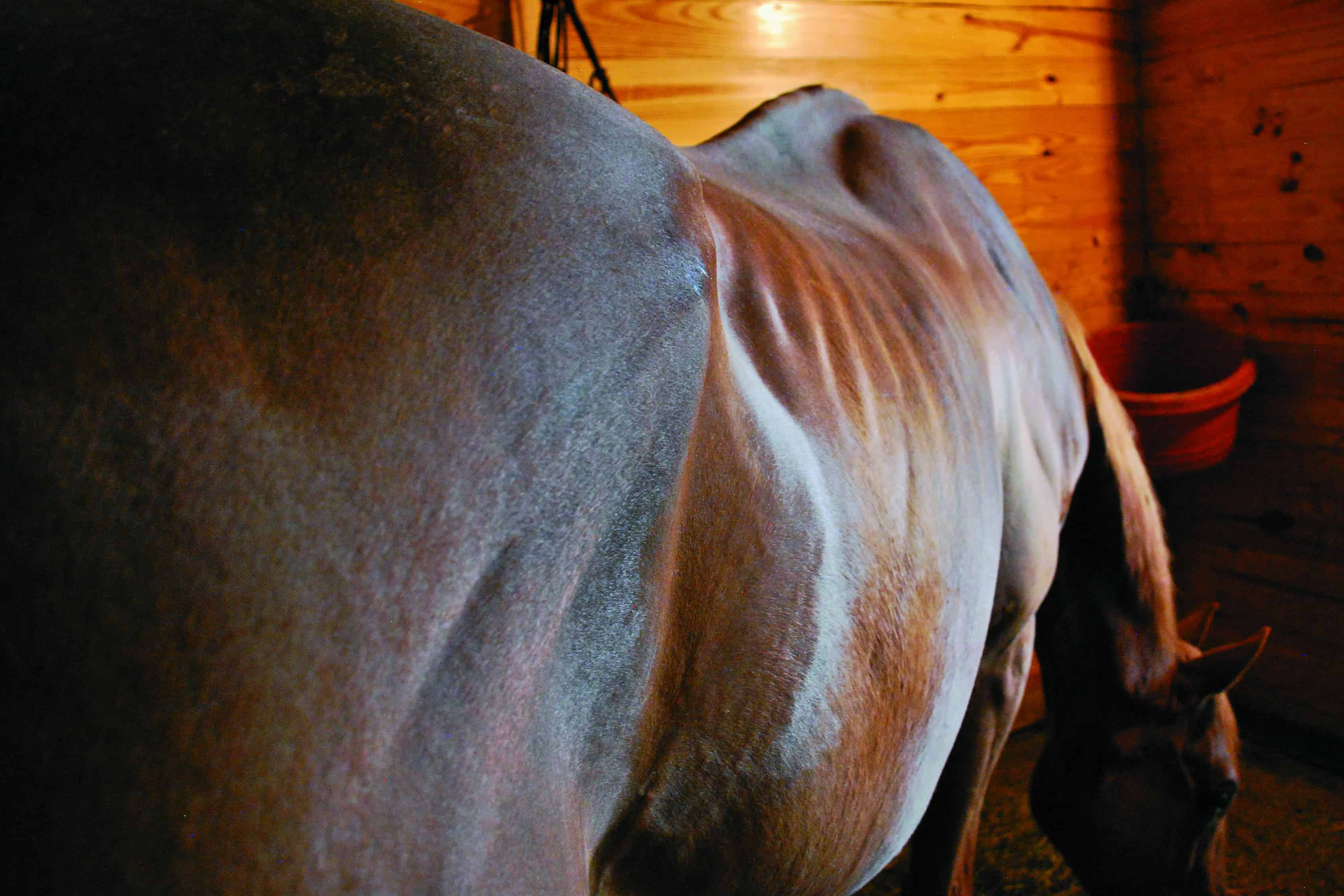Feeding Healthy Hard Keepers

Does your otherwise healthy horse have trouble keeping pounds on? Here are some tips to consider when feeding healthy hard keepers.
Which Horses are in this Category?
Any horse 4 to 5 years or older that spends most of his days relaxing in his pasture while going for the occasional ride is considered a horse at maintenance. Maintenance requirements, nutritionally speaking, are those physiological requirements for respiration, digestion, and other bodily functions.
The National Research Council divides the digestible energy (DE) requirements for maintenance into three categories, based on voluntary activity level:
- The minimum activity level animal lives a very sedentary lifestyle and requires an estimated 15.2 Mcal (or megacalories) DE daily for an average 1,100-pound horse. Horses in this group having limited turnout time, are turned out into small paddocks, or do very little voluntary activity in larger turnout areas.
- Horses with a nervous temperament or high level of voluntary activity, either out on pasture or in the stall, have a higher requirement that could reach to 18.2 Mcal DE for an 1,100-pound horse.
- There is also an average level, requiring 16.7 Mcal DE daily. These horses usually show a moderate level of voluntary activity in the stall or turnout area and have an alert temperament.
If your horse has no health issues or dental issues that could impede nutrient digestion, you can implement dietary changes to increase his body weight and condition. The goal is simply to increase energy, or calorie, intake.
The time it takes to change a horse’s body condition one score (for example, from a 4 to a 5 on the 1-9 Henneke scale) will vary, but it could take 60 days or more for a change to become apparent. As always, make all diet changes slowly to avoid digestive upset.
Steps to Putting on the Pounds
- Rates and Measures. Weigh everything, including flakes of hay. Horses need to consume, at very least, 1% of their body weight in pasture, hay, or other fiber sources. For the average 1,100-pound horse, that would be at least 11 pounds of forage per day. In most cases, a horse should consume more than 1% of his body weight in forage daily. If you’re feeding a commercially available product, compare the feeding rate recommended on the tag or bag to your current feeding rate. Feeding rates will be delineated in pounds, not scoops, coffee cans, or handfuls. Ensure your feeding plan meets the manufacturer’s recommended rates.
- Forage first. Take a look at your horse’s forage sources. If it’s pasture, can he be turned out for a longer period of time on a field with more available grass? If it’s hay, can you feed him a better quality hay or include an alternate fiber source, such as beet pulp, hay cubes, or fiber pellets? Or will your horse simply eat more hay if you put it in front of him? Sometimes hard keepers just need more groceries to keep the pounds on.
- Kick Up the Carbs. Carbohydrates from grain such as corn and oats can increase the DE concentration of the horse’s diet. Feeding these grains alone without balancing the total diet could lead to nutrient imbalances. So consider a formulated and balanced commercially available product. If you’re already feeding such a product, consider increasing the amount fed per day or switching to a more calorie-dense product.
- Feed Fat to Add Fat. Fat sources, such as rice bran, flax seed, and vegetable oil, are good ways to increase calorie content without drastically increasing the amount of feed consumed. This is simply because fat is a concentrated calorie source, containing about 2.5 times more DE than corn or oats. In most cases, adding a fat source does not cause nutrient imbalances because it is a source of calories alone. However, studies have shown that the digestibility of fat increases when added to forages or grains. This means when a fat source is mixed with forage and/or grain, the horse will be able to digest and utilize more of it.
- Break Time. Although it might not be desirable or even practical, another option is to reduce a hard keeper’s calorie expenditure through a decrease in activity level. This can include cutting back on exercise, either reducing the number of rides per week or length of time spent working the horse.
If questions arise when feeding a hard keeper, consider consulting a veterinarian or equine nutritionist to ensure your horse consumes an appropriate diet.
Written by:
Kristen M. Janicki, MS, PAS
Related Articles
Stay on top of the most recent Horse Health news with















